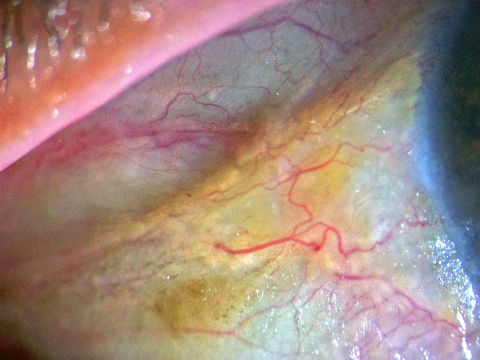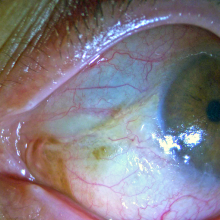Bitot's spots - vitamin A deficiency
Bitot’s spots are considered pathognomic of vitamin A deficiency and correspond to triangular patches of squamous keratinous metaplasia of the conjunctival epithelium, usually near the limbus, typically at the three o’clock and/or nine o’clock positions. The foamy aspect is attributable to colonization by gas-producing bacteria (p.e. Corynebacterium xerosis).
Although vitamin A deficiency is relatively uncommon in developed nations, it can be found in malnourished patients with other comorbidities that promote an altered metabolism, as in this case in which a 49-years-old patient, with a history of generalized low nutritional intake and alcoholic hepatopathy, presented with bilaterally decreased vision and nyctalopia. Ophthalmological examination was remarkable for paralimbal temporal and nasal Bitot's spots and extreme corneo-conjuntival xerosis, in both eyes. While awaiting for the determination of serum retinol levels, empirical supplementation was initiated with oral retinol (200.000 IU on day 1, followed by the same dosage on day 2 and day 7 and 8 of admission) as per the WHO protocol, accompanied by topical therapy with a retinoic acid ointment 50.000 IU/g twice daily. At discharge, despite a significant bilateral improvement in the ocular surface with resolution of the xerosis, the Bitot’s spots persisted. The diagnosis was further confirmed by evidence of low serum retinol levels (0.2 µM; reference adult range 0.7-2.8 µM).





